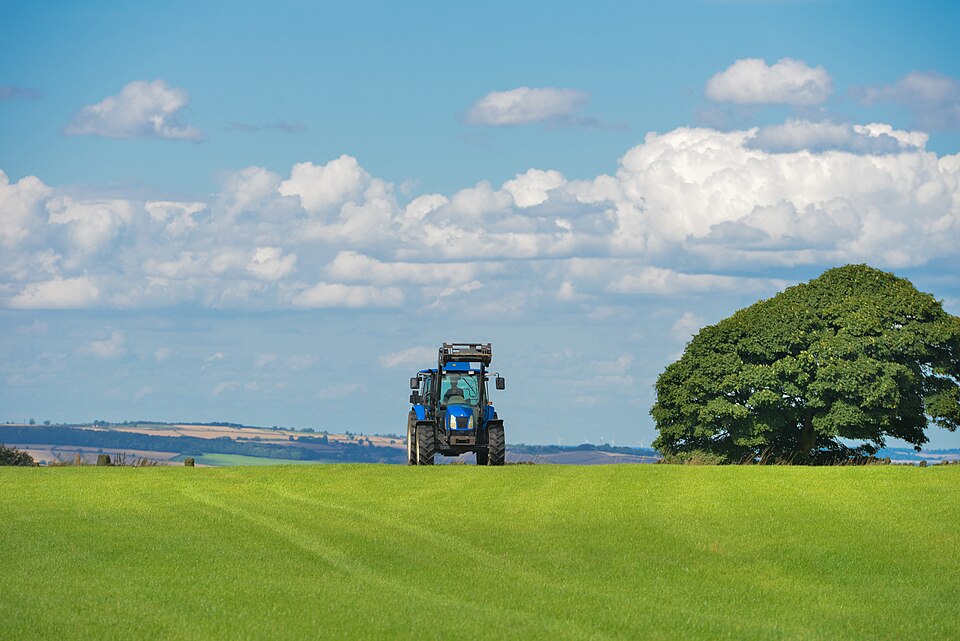
Timelines 10
Man and his Senses 10
Man and his Inventions 10
Geography 10
Fauna 10
Timelines 10
Man and his Senses 10
Man and his Inventions 10
Geography 10
Fauna 10

By the turn of the twenty-first century, Czech agriculture had become a study in contrasts, an inheritance of centuries of mixed farming and a twentieth-century landscape reshaped by collectivisation, field consolidation and later market reforms. Today it stands at the intersection of heritage, environmental stress, and a fresh wave of policy and technological push from the EU and the private tech sector.
The country’s cultivated land, which accounts for a notable share of national territory, is roughly half of the land area and amounts to several million hectares. It supports a structure of holdings that is unusually concentrated for the European Union. The scale and pattern of those holdings, and the legacy of twentieth-century land use changes, remain central to how soil loss, compaction, and erosion are understood and addressed.
Soil scientists and environmental historians point to clear signs: long-term monitoring and national surveys, taken together, show widespread susceptibility to surface erosion, declines in organic matter, and damage to soil structure in vulnerable landscape types. National estimates describe the problem in stark terms, with annual soil loss measured in the tens of millions of tonnes, tying back to cropping choices, slope, and the erosion-prone soils that occupy the country’s sloping terrain.
From this evidence has emerged a practical two-part plan endorsed by soil experts: first, to close the data gap through systematic monitoring and modern mapping, including digital soil mapping and higher-resolution monitoring networks; and second, to deploy protective measures on the ground, such as reduced tillage, contouring, and landscape features that would slow down the runoff, where the maps and models point to the greatest nutritional soil loss.
This is not merely a scientific programme but a policy effort, because the instruments and money to scale monitoring and mitigation are available within the EU framework of the Common Agricultural Policy (CAP) and the ambitions of the European Green Deal.
Under the CAP strategic planning process, Czechia has mapped its priorities and budget choices, defining the legal instruments and the eco-schemes that will direct funding for competitiveness, resource protection, and rural viability. This creates a route by which the technical priorities of soil science can be converted into on-the-ground projects, from co-funded precision-mapping investments to measures that reward practices which reduce erosion risk.
The policy alignment is clear: the CAP furnishes the legal and fiscal framework, the scientific literature defines where the soil is most threatened, and the remaining challenge is administrative—to translate maps and monitoring data into local incentives, advisory services, and farmer uptake.
Into that space of policy and environmental need has come a new generation of tools, including remote sensing, drones, soil sensors, and data analytics. Champions argue that the European Green Deal will accelerate their adoption by tying public finance and market signals to environmental performance.
Comparative studies of Central European practice show that precision agriculture tools are already being trialled, and in some cases adopted, on organic and conventional holdings alike: drones for crop and soil monitoring, ground sensors for moisture and nutrient mapping, and early robotic applications for labour-saving tasks. Commercial platforms and vendors, while naturally optimistic, map useful use-cases, such as satellite-based vigour maps, farmer dashboards, and irrigation scheduling, that can anchor pilot projects financed through CAP instruments or national co-funds.
Yet adoption studies caution against the idea that technology alone will solve problems: survey evidence can overestimate uptake if early adopters dominate responses, and scaling requires training, maintenance, and financing pathways that are built into policy design rather than assumed.
If Czech agriculture today is negotiating a shift from legacy practice to data-driven stewardship, a trans-continental mirror opens across Asia, where India—a country in which agriculture remains the primary livelihood for a large share of the population—faces a different set of constraints and yet a comparable modernisation imperative.
India’s policy framework is dense and active: national portals and policy digests list a set of schemes addressing risk-sharing, including a national crop-insurance programme, water productivity through schemes such as Per Drop More Crop, climate and agrometeorological services, finance for infrastructure, and a patchwork of extension and Krishi Vigyan Kendra (KVK) led advisory mechanisms. The challenges these programmes confront are familiar, including small, fragmented landholdings, uneven access to irrigation, and mounting climate risk, and they elevate different technical and administrative priorities than those of the Czech lowlands.
The Czech–Indian connection is not merely rhetorical. Historical trade links and industrial ties, most visibly embodied by the long presence of a Czech tractor manufacturer in Indian markets and by assembly and partnership arrangements stretching back decades, provide an existing channel for machinery, know-how, and commercial cooperation.
Into that channel can be threaded modern technical cooperation: Czech expertise in soil mapping and Central European experience with precision tools could be paired with Indian pilots that operate at the scale of smallholders, while India’s fast-moving digital ecosystem and emerging AI interventions in agriculture—ranging from weather and yield forecasting to satellite analytics and supply-chain optimisation—offer the data systems and scale that such pilots require.
But here too, the evidence advises patience and deeper understanding: practitioners stress the essential prerequisites for AI and data projects, including reliable, ethical data sets, strong internet connectivity, local technical capacity and energy fulfilment. Indian government schemes point to the need for integration with existing insurance, weather, and market services if technologies are to raise incomes rather than simply produce more data.
The comparative lesson is practical rather than romantic. Czechia’s expertise in mapping, soil-priority lists, and CAP funding windows identify where investment and monitoring can reduce erosion. Central European studies show that drones and sensors can deliver actionable field-level data. India’s policy and market system demonstrates both the urgency of scale and the institutional routes for scaling through insurance, infrastructure, and extension.
A cooperation that pairs Czech technical depth—including soil science, digital mapping, and machinery familiarity—with Indian scale and digital systems, including AI, advisory platforms, and farmer networks, could yield pilots that test data-driven mitigation in both temperate and tropical contexts, but only if they budget for training, maintenance, adaptive governance, and the simple realities of farmer uptake.
That is the balance the evidence points to: maps, models, and machines are necessary, but they work only when folded into policy instruments, local institutions, and the practical routines of farming life.
Sources
https://tinyurl.com/mp4mwxjp
https://tinyurl.com/yckfx365
https://tinyurl.com/54mv8epn
https://tinyurl.com/4rsur98f
https://tinyurl.com/26m9jmmh
https://tinyurl.com/3t86yp7r
https://tinyurl.com/4zxuecr2
https://tinyurl.com/5239muah
https://tinyurl.com/3hduedyb